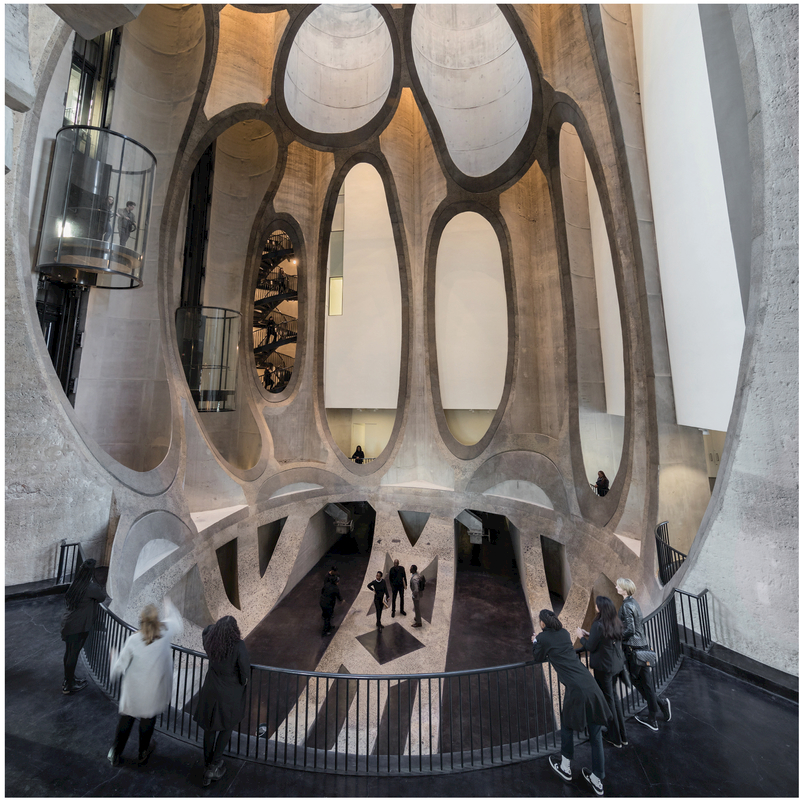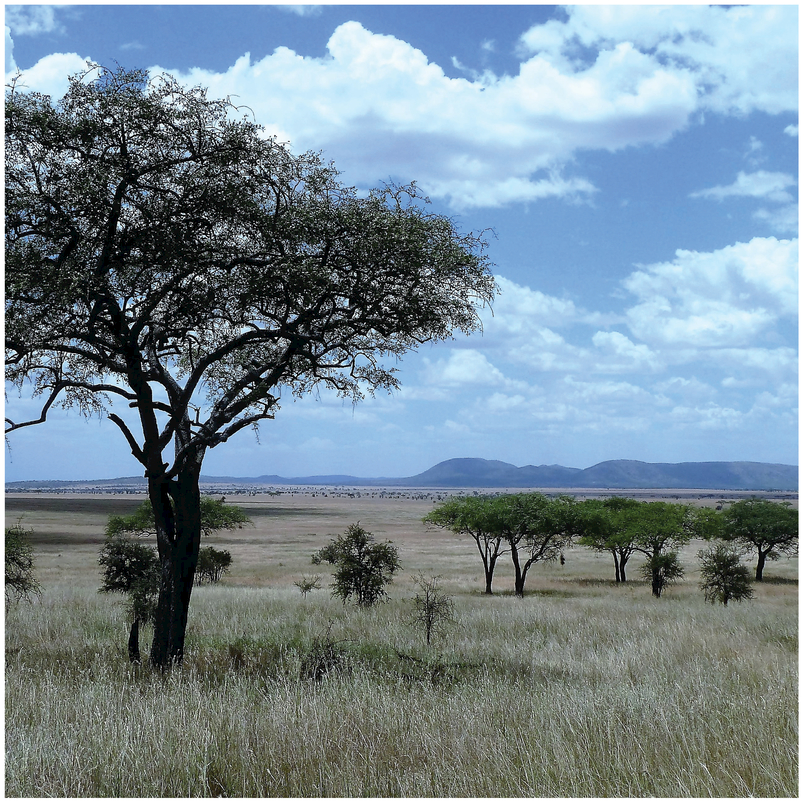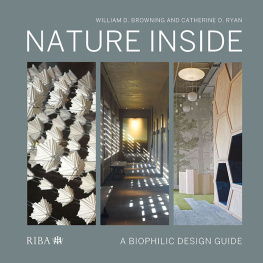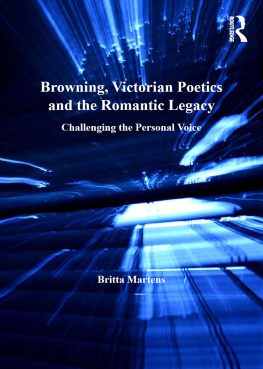William D. Browning - Nature Inside
Here you can read online William D. Browning - Nature Inside full text of the book (entire story) in english for free. Download pdf and epub, get meaning, cover and reviews about this ebook. year: 2020, publisher: RIBA Publishing, genre: Romance novel. Description of the work, (preface) as well as reviews are available. Best literature library LitArk.com created for fans of good reading and offers a wide selection of genres:
Romance novel
Science fiction
Adventure
Detective
Science
History
Home and family
Prose
Art
Politics
Computer
Non-fiction
Religion
Business
Children
Humor
Choose a favorite category and find really read worthwhile books. Enjoy immersion in the world of imagination, feel the emotions of the characters or learn something new for yourself, make an fascinating discovery.
- Book:Nature Inside
- Author:
- Publisher:RIBA Publishing
- Genre:
- Year:2020
- Rating:4 / 5
- Favourites:Add to favourites
- Your mark:
- 80
- 1
- 2
- 3
- 4
- 5
Nature Inside: summary, description and annotation
We offer to read an annotation, description, summary or preface (depends on what the author of the book "Nature Inside" wrote himself). If you haven't found the necessary information about the book — write in the comments, we will try to find it.
Nature Inside — read online for free the complete book (whole text) full work
Below is the text of the book, divided by pages. System saving the place of the last page read, allows you to conveniently read the book "Nature Inside" online for free, without having to search again every time where you left off. Put a bookmark, and you can go to the page where you finished reading at any time.
Font size:
Interval:
Bookmark:

WILLIAM D. BROWNING AND CATHERINE O. RYAN
A BIOPHILIC DESIGN GUIDE

William D. Browning and Catherine O. Ryan 2020
Published by RIBA Publishing,66 Portland Place, London, WIB IAD
ISBN 978-1-85946-903-3
The rights of William D. Browning and Catherine O. Ryan to be identified as the Authors of this Work have been asserted in accordance with the Copyright, Designs and Patents Act 1988 sections 77 and 78.
All rights reserved. No part of this publication may be reproduced, stored in a retrieval system, or transmitted, in any form or by any means, electronic, mechanical, photocopying, recording or otherwise, without prior permission of the copyright owner.
British Library Cataloguing-in-Publication Data
A catalogue record for this book is available from the British Library.
Commissioning Editor: Elizabeth Webster
Production: Sarah-Louise-Deazley
Cover: Sara Miranda Icaza
Designed and typeset: Sara Miranda Icaza
Printed and bound by Short Run Press Limited, Exeter
Cover images by Sosolimited, Daniel Aubry and Oliver Heath Design (left to right).
While every effort has been made to check the accuracy and quality of the information given in this publication, neither the Authors nor the Publisher accept any responsibility for the subsequent use of this information, for anyerrors or omissions that it may contain, or for any misunderstandings arising from it.
www.ribapublishing.com
[FSC logo-printer to place here]
Thomas Heatherwick

HEATHERWICK STUDIO, ZEITZ MOCAA, CAPE TOWN, SOUTH AFRICA, 2017. To repurpose a decommissioned grading tower and silos as the Museum of Contemporary African Art (MOCAA), cutbacks to the concrete silos resulted in an awe-inspiring biomorphic form for the central atrium. On the upper levels of the tower, fractal window patterns impact perceptions of time and movement, reflecting a diurnal kaleidoscope of textures and colours a highly biophilic experience without the presence of living vegetation.
BY THOMAS HEATHERWICK
Biophilia is a weird word. I had noticed it being used, but had got away with ignoring it until one day one of my studios collaborators wrote it into the brief for a project.
Initially, I had assumed that biophilia was just a pretentious and over-complicated way to express the simple and obvious point that plants are generally pretty good. But when I started properly looking into it, I learnt that this word is about much more than this it delves deeper into ourselves and the science of our emotional responses to the world. I was fascinated, while simultaneously being embarrassed at myself for having previously dismissed it.
One of the reasons I originally set up my studio to design buildings and spaces was that I had felt that the emotional impact of new buildings in cities was being comprehensively overlooked, in favour of the cerebral, conceptual and mundane. The new buildings I was seeing, made from glass, metal and concrete, were technically amazing bigger, taller and shinier than anything in history. But how did they make us feel? What did they do for us emotionally? The neglect of this dimension seemed to urgently need addressing.
As my own studios projects grew from objects to buildings to entire pieces of city, I had found myself instinctively looking to nature and its lessons to create a counterpoint to the hard, monotonous environment that I had experienced around me growing up in 1970s London. These large new boxes that surrounded me as a child were frequently devoid, not just of greenery and nature, but of anything that might make me feel connected, curious or interested in what happened inside them.
As a counterpoint to the boring-ness, my team and I started gravitating towards the use of more natural materials that age and patinate over time and the use of plants, trees and organic forms as a way to create places that felt softer, kinder and more human in scale. We werent sure of any science, but we were sure that the integration of a more natural approach to place-making created places that gave people a feeling of more balance and harmony.
In an age where mental health and well-being are becoming widespread problems that many of us encounter in our lives, it is now clearer than ever that, to design better buildings, society needs to reconnect with its own instinctive and emotional sensibilities. And nature can be an amazing teacher.
For the last century, the practice of architecture has been dominated by the cerebral, academic and theoretical, without a sucfficient balancing factor of instinctive and emotionally intelligent thinking about how structures and spaces make us feel. Biophilia, for me, is one potential form of antidote. Its interesting because it is much broader than just being about the love of plants or the obvious benefits of greenery (). It touches every aspect of design: whether we can see the sky change from within a room, or how we perceive sounds and movement, like the twitch of leaves or gentle noises of moving water. In our studio, we have become passionate about making places that people can feel an emotional connection with. Were clearer than ever that nature provides many of the clues to creating places that can be more alive.
Nature has infinite lessons for designers. Water and grasses can give a place vitality and the movement of a garden can provide a poetic contrast to the rigidity of a building. Im equally fascinated by imperfection by the ever-so-slight differences that give authenticity to texture; wood that shows its grain; materials that can be repaired and mature as they age. Nature has rhythms and patterns; it is complex and beautiful and always interesting. Why must everything be perfectly smooth and aligned? Whats wrong with rough, raw and real?
A book dedicated to exploring biophilic design is something to celebrate and Im delighted to be able to contribute. There is a growing body of evidence to support a way of working I had thought was simply intuitive and principles that can now be advocated for more objectively. To create meaningful places that will endure, designers need to consider their emotional response to place, which goes beyond the old-fashioned conception of rational, linear thinking. The concept of biophilia is a brilliant way to frame a set of issues that I believe are critical to the design of the environments around us where nature is not just a prop to achieve another aim but instead, the overall objective should be a more natural world.

SAVANNAH LANDSCAPE, SERENGETI, TANZANIA. With a prospect view across a sloping landscape, a tree canopy for refuge from the sun, and sometimes a water body and evidence human habitation, the savannah landscape is the quintessential biophilic environment.)
WHAT IS BIOPHILIA AND WHAT DOES IT MEAN FOR BUILDINGS AND SPACES?
An underlying premise of incorporating nature into the built environment is that when people are regularly in contact with nature, personal health and wellbeing will improve in a manner and to a degree that contributes meaningfully to public health, community resilience and environmental stewardship.
Font size:
Interval:
Bookmark:
Similar books «Nature Inside»
Look at similar books to Nature Inside. We have selected literature similar in name and meaning in the hope of providing readers with more options to find new, interesting, not yet read works.
Discussion, reviews of the book Nature Inside and just readers' own opinions. Leave your comments, write what you think about the work, its meaning or the main characters. Specify what exactly you liked and what you didn't like, and why you think so.













